How did it all start? What kind of work did you make when you started out?
Maarten Rots (MR): I have always had an interest in photography. As a photographer taking my own photos, but also by working with other people’s photos which led me to making collages. I found a renewed interest in taking photos in the year Canon came out with the EOS 300D. I really enjoyed going outside to take photos of my surroundings. The photos I took in that year and the collages I made are what got me into the Gerrit Rietveld Academy in Amsterdam, where I graduated from the audio visual department (VAV) in 2010.
How did your research evolve with respect to those early days?
MR: The shift in how photography is used nowadays compared to when I was growing up is something that intrigues me. The ‘once every six months family slide show’ is one of my favourite childhood memories, but also a happening that has become completely obsolete. The moments we had during these intimate little photo screenings were very special and we all cherished the images that would appear on the projector screen. There was a certain concentration when we would look at these photos, even though most of them were simple snapshots.
Now that ‘everyone’ always has a camera in their pockets and photos are immediately shared and viewable by anyone the sentimental value of the photo has reduced to an all-time low since the invention of photography. I’m fascinated to see how the role of photography has changed so much so quickly.
What is your approach to art and specifically to photography? Do you consider yourself a photographer?
MR: I am an artist working with photography. Photography lays at the heart of my work. I use photography as a material source in my work but also as a phenomenon I want to research. I love walking around with my camera hoping to capture something special but also enjoy going through other people’s pictures, trying to make senseof their world.
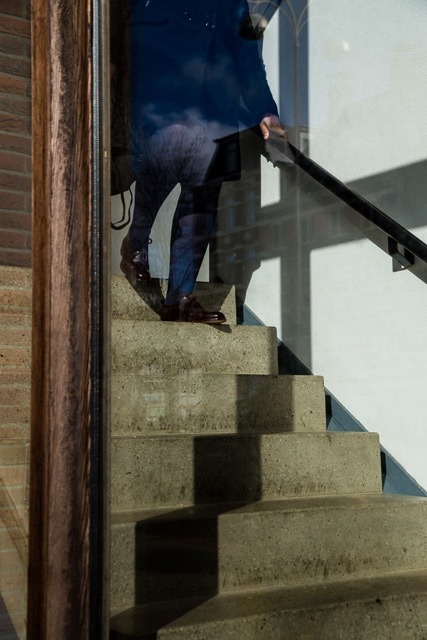
© Maarten Rots, Amsterdam, February, 2015
Tell us about your educational path. What are your best memories of your studies? What was your relationship with photography at that time?
MR: The best aspect of studying at the Rietveld was that it gave me the opportunity to develop myself as a person, to dig into the bigger questions of life. Next to that it was a time to explore and experiment and figure out which subjects, materials and media I like to work with. Talking with fellow students and teachers about what it is you are doing is extremely valuable and when finishing your education I think this is what you start to miss most. During my studies I used photography as a means to an end, not so much as a goal. Most of the photos I took were to document an action, intervention or installation. It was after I finished my studies that I started to use the photo camera to capture images as autonomous works.
Is there any teacher or fellow artist that has allowed you to better understand your work?
MR: There is one teacher who helped me a lot when I was struggling with what it means to (choose to) be an artist. Every summer one of my teachers, Harry Heyink, organizes theEuropean Exchange Academy (EEA), a five week international summer academy that takes place in the German woods in the ruins of a former tuberculosis hospital in Beelitz-Heilstätten, near Berlin. It’s a very intense period of production and reflection, where you get to meet and work together with other young aspiring artists as well as advisors (there are no teachers here, only advisors) from all around the world. I went here as one of the participants in 2009 and it has been a very important experience in my development. Next to the intellectual experience it also gave me something on a very practical level: exposure. Several videos I made during my stay at the EEA have been screened at a lot of festivals and even won some awards, something that has definitely boosted my confidence in my work and also gave me the possibility to invest in my equipment.
After having been at the EEA as a participant I have returned several times as an advisor and it still holds a very special place in my heart.
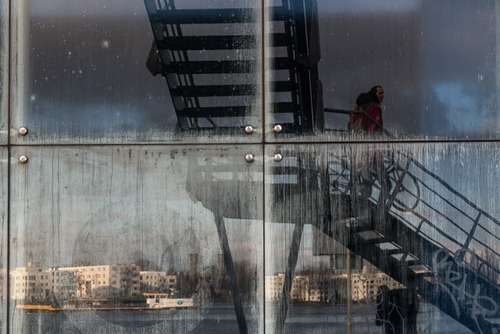
© Maarten Rots, Amsterdam, January, 2015
Nowadays, you are a teacher yourself at the Rietveld Academy. What is the value of teaching to you?
MR: I’m amazed how sharing just a little bit of knowledge, be it practical or theoretical, can have such an impact on how someone develops. This is something that drives me but it is also a big responsibility. I hope my students understand that a teacher’s opinion is not necessarily reflecting the truth, but offers a certain perspective which can help the student to better understand his or her own process and subject matter. Next to that; teaching is valuable to myself as well, it’s not a one-way street. I also learn while teaching.
You work a lot with found footage photos, slides and film. How do you find and choose the footage?
MR: I sometimes literally find them on the street; in Amsterdam it’s not uncommon for people to just dump what seems to be a complete household on the street. I also find them on flea markets, in second hand stores and even bought some from eBay although that is not nearly as satisfying; I guess the act of finding and discovering is a big deal for me. It’s a bit like treasure hunting. I have always done this; as a kid I would take a shovel into the fields hoping to dig up some remains from the past.
The selection process is quite different and more time consuming. Especially with super 8 film it’s always a surprise what you have got; I will not know this until the moment I load a reel onto the projector and start watching. There’s no skipping through like we’ve become so accustomed to with online video, I will watch the whole thing - often more than once. I really enjoy doing this. The same goes for slides. Of course you can already quickly look at the slides by holding them up to the sun, but they really start speaking to me when I project them on a larger scale.
It’s kind of addictive too; once I power up the projector with its distinctive sound and smell it’s hard to stop watching. I try to look for repetitive things in the images; the way someone poses, a recurring object or space or other patterns that were unwittingly left by the people who took the pictures. Sometimes when I have a set of images that once belonged to a couple I can see a clear difference in style of photographing. I like finding these kinds of things, it feels like I am getting closer to the people these photos once belonged to.
Almost always the final work will consist of multiple images of one collection. I try to keep each collection as a whole, so when I work on an installation like ‘Breeze’ in which I used images from multiple collections, it’s hard to keep everything sorted and organized.
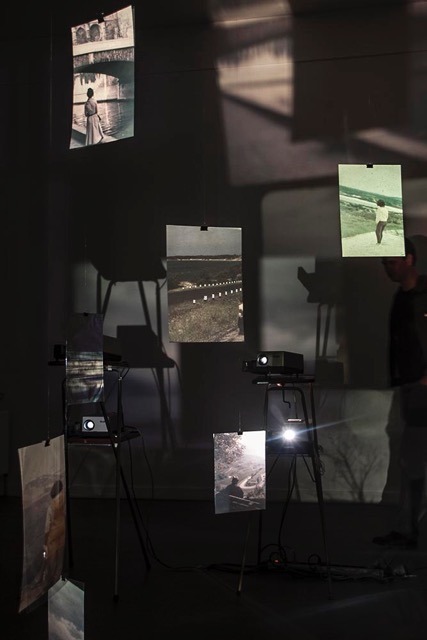
© Maarten Rots, Breeze, 2014
In the series ‘Verhoudingen’ and ‘Ensemble’ you combine old slides to make new images in different ways. What is the relationship between these two series?
MR: On a formal level they are related in that both works had slides as a starting point and I used not just the image, but the slide as an object in order to create the final work.
On a conceptual level, in both series I’m trying to convey a story by combining images. Where ‘Verhoudingen’ is rooted in doing this by bringing together people and places that in no way had a relationship before I decided them to have one, the ‘Ensemble’ series consists of images that were taken on the same location at moments pretty close to each other. The people in the separate images most certainly knew (and photographed) each other.
The difference between the two is the fact that in ‘Verhoudingen’ the blend of two photographs is fixed and it is hard to figure out where one image ends and the other begins. In the ‘Ensemble’ series, the viewer sees two separate images blend together over time, pulling the work more towards an investigation on a formal level.
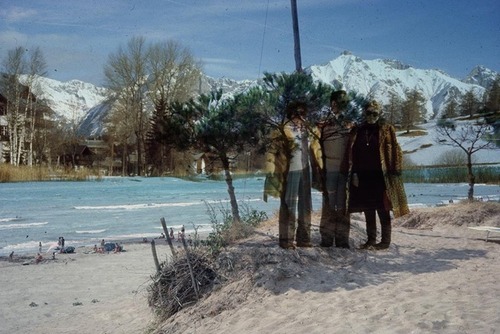
© Maarten Rots, Verhoudingen, 2011
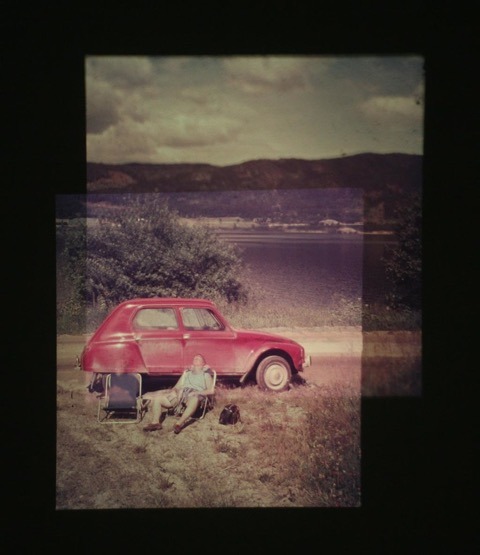
© Maarten Rots, Ensemble, 2012
Sometimes photography is your subject, such as in the series ‘Esthetics Of The Self Timer’. Can you explain some more about this?
MR: This is a series of images that I searched and found online and revolves around the use of the self timer mode of the camera. This interest was triggered after I found two slides of a group portrait. One of them shows the actual portrait, the other is what most people would consider to be a failure: the person responsible for pressing the shutter was not fast enough and appears with his back towards the camera, blocking the group. I decided to see if I could find similar images on photo sharing websites like Flickr and to my amazement there was a lot to be found. I broadened the subject of my investigation to ‘any photo ‘unsuccessfully’ taken using the self timer mode’. Next to the series of ‘runners’ many more categories arose, which I then got printed and presented as small groups of photos.
I guess you can see this work as a photography essay in which I’m trying to make sense of the visual culture we live in. Why do we take pictures of ourselves, what is the function of that particular photo? Why do we still share images that are mostly considered as a failure if one keeps the initial goal in mind? Why are we all taking the same pictures?
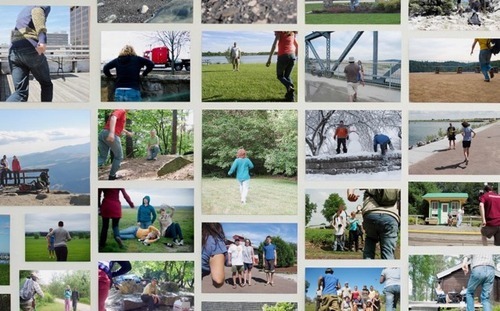
© Maarten Rots, The esthetics of the self-timer (detail), 2013
Can you tell us something about the way you install your work; your use of space and techniques in your installations?
MR: When I’m working on an installation, the selection process is something that happens in my studio. I make small try-outs in which I test the technical aspects of possibilities for an installation. But the real work doesn’t start until I get to be in the space where the installation will be. Especially when working with slide projectors, this is the moment where I can see if the image has to be large or small and how it relates to the space. For example, in the installation ‘Yellow Flowers’ I combined 15 found slides that had been taken in the same living room over a period of several years. By sequentially projecting them on the walls of the space I wanted to give the viewer an idea of what that room must have been like. In this case it was important for me that the people in the images would appear approximately life size. I find it important to create a certain intimacy; these photos were once taken to serve as personal documentation and I want that to be reflected within the work.
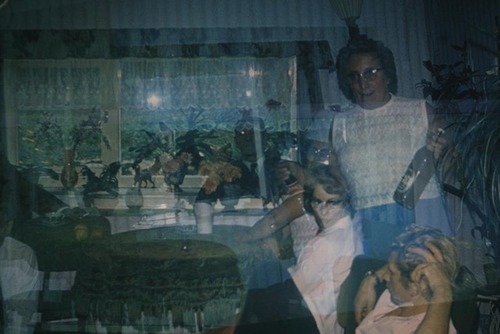
© Maarten Rots, Yellow Flowers, 2013
Is there someone, inside or outside of the arts, that has strongly influenced your work?
MR: My beautiful wife Anne is never tired of discussing what I’m working on and she gives me a lot of room to do what I do. It is an enormous luxury to have someone around to share ideas with and her insights inspire me to push myself further. Her belief in me and my work means a lot and gives me the courage to continue. My words don’t do justice to how much I appreciate what she does to me. She is truly awesome.
Can you recommend a book, movie or exhibition that has been a source of inspiration to you?
MR: Growing up we did not have much art around, but my parents had a book in the higher shelves of the bookcase and whenever my parents would be out of sight this was the one book I would risk falling flat on the face for. I would stack cushions on a stool in order to reach to the top shelve so I could have a look. It was the book ‘Hallo!’ by renowned Dutch photographer Ed van der Elsken. Since there is some nudity in the book, I wasn’t allowed to look inside, but of course anything you’re not supposed to be doing you will do.
Looking back, I can now see how this book has had a very big impact on my development as an artist. Both the way the photo are combined on the pages as well as the voyeuristic taste to some of the photos are aspects that I can also see in my own work. My parents gave me their copy of the book a couple of years ago and it’s a book I still reach for every now and then. Looking at it right now, I notice that I have placed it on the top shelve of my own bookcase…
What projects are you currently working on and what are your plans for the future?
MR: I am very excited to start publishing my own photography magazine, March & Rock, which will have a new edition four times per year. Each volume is loosely built around a theme and will mainly consist of photos, all taken by me and will be printed in an edition of 100. The first volume of March & Rock will be published in April 2015.
Next to that I have developed a personal residence project called Siting, which involves me working in a gallery or art space for one week, limiting myself to take photos in a fixed area around the gallery of only one kilometre radius and with these images present an exhibition. During the project anyone is welcome to visit and I will also have a dedicated blog where you can see the project unfold. The first edition will take place in Qlick Editions in Amsterdam in July 2015.
The ultimate goal is to do this project on many different locations all over the world.
---
LINKS
Maarten Rots
The Netherlands
share this page